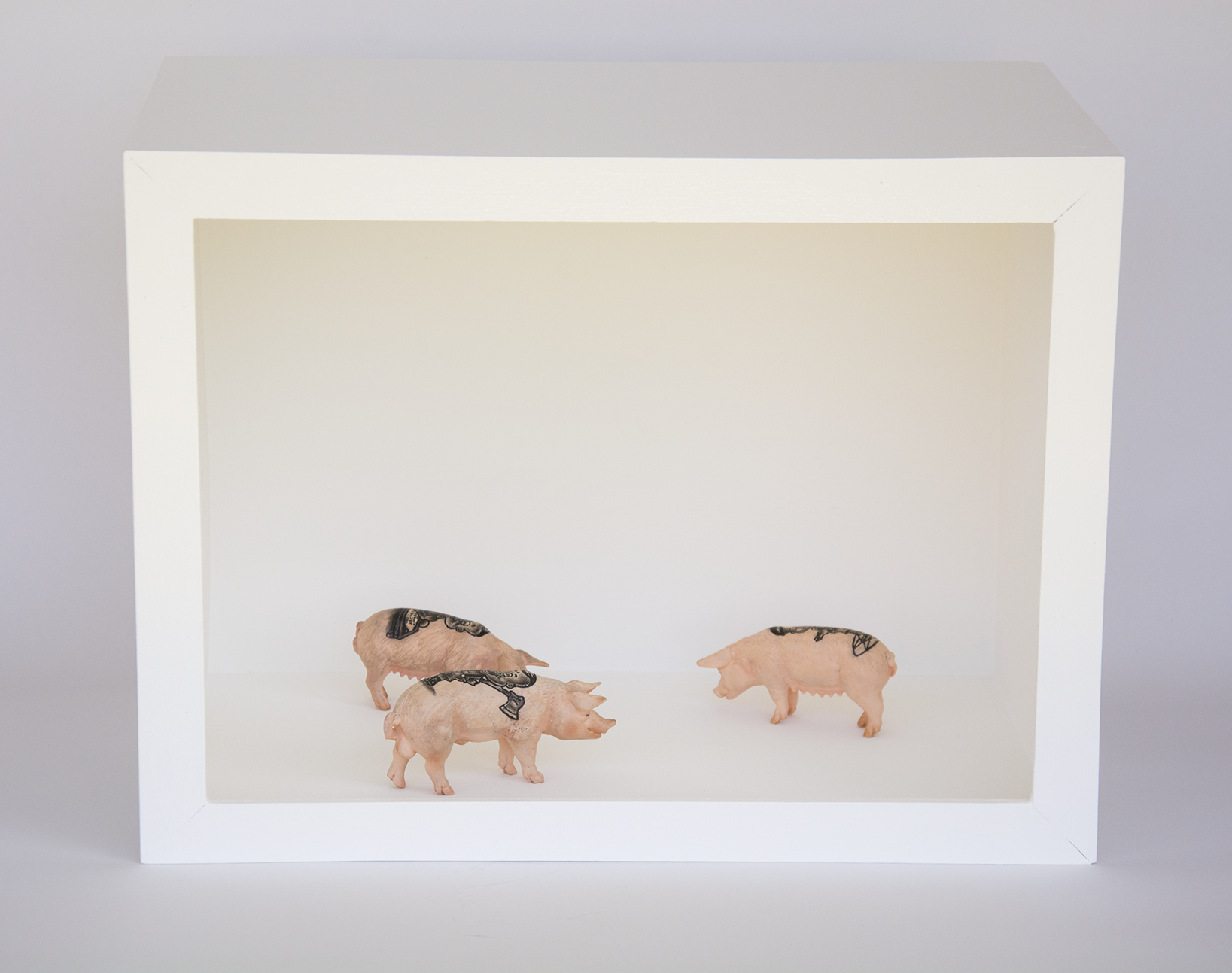COLL.EO's MENAGERIE is live.
DESCRIPTION
A set of layouts made of wood, glass, glue, paint, plexiglass, Schleich plastic toys and other materials.
We produced two configurations:
16 ½ x 12 ½ x 10 ½ inches (L x H x W)
24 ½ x 12 ½ x 16 ¼ inches (L x H x W)
See more.
ARTWORKS
The Physical Impossibility of Death etc. (March 23, 2014)
Art Farm etc. (March 24, 2014)
Untitled etc. (March 25, 2014)
I Like America etc. (March 26, 2014)
Untitled etc. (March 27, 2014)
Elephant in the Room etc. (March 28, 2014)
Spring Training (March 29, 2014)
Hahn/Cock (March 30, 2014)
Würsa à 18000 Km etc. (March 31, 2014)
Mother and Child (April 1, 2014)
GLOSSES
“Can contemporary artist be trusted with animals, living or dead? Can they be trusted to act responsibly, ethically, when their work engages with questions of animal life? Will they put ethics first or will they put the interests of their art before ethics?” (Steve Baker,Artist/Animal, 2013, p. 1)
“The glass front of the diorama forbids the body's entry, but the gaze invites his visual penetration. The animal is frozen in a moment of supreme life, and man is transfixed. No merely living organism could accomplish this act. The specular commerce between man and animal at the interface of two evolutionary ages is completed. The animals in the dioramas have transcended mortal life, and hold their pose forever, with muscles tensed, noses aquiver, veins in the face and delicate ankles and folds in the supple skin all prominent.” (Donna Haraway, “Teddy Bear Patriarchy: Taxidermy in the Garden of Eden”, Social Text, 1985, p. 25)
“All the toys one commonly sees are essentially a microcosm of the adult world;. [...] The bourgeois status of toys can be recognized not only in their forms, which are all functional, but also in their substances. Current toys are made of a graceless material, the product of chemistry, not of nature. Many are now moulded from complicated mixtures; the plastic material of which they are made has an appearance at once gross and hygienic, it destroys all the pleasure, the sweetness, the humanity of touch.” (Roland Barthes, "Toys", in Mythologies, 1984 [1955], p. 65)
"[T]he manufacture of realistic animal toys coincides, more or less, with the establishment of public zoos. [...] Adults take children to the zoo to show them the originals of their "reproductions", and also perhaps in the hope of re-finding some of the innocence of that reproduced animal world which they remember from their own childhood. [...] A zoo is a place where as many species and varieties of animal as possible are collected in order that they can be seen, observed, studies. In principle, each cage is a frame round the animal inside it. Visitors visit the zoo to look at animals. They proceed from cage to cage, not unlike visitors in an art gallery who stop in front of one painting, and then move on to the next or the one after next." (John Berger, "Why Look at Animals" in About Looking, 1980 [1977], p. 23)
“Potentates demonstrate their power by appearing to sustain a cosmos. One element of that cosmos is a menagerie. The keeping of menageries is is a tool of high civilization, combining the desire for order with the desire to accommodate the heterogeneous and the exotic.” (Yi Fuan, Dominance and Affection: The Making of Pets, 2004, p. 75-76)
SPECIAL THANKS
Ruth Flaherty's help, vision, patience, and wisdom were essential to bring Menagerie to life, no pun intended. We would also like to thank Michael Flaherty and Brendan Flaherty for their precious assistance.
We are very grateful to SF-based artist Dan Valenzuela who collaborated with us with his cartoon drawings for the Art Farm etc. layout.
